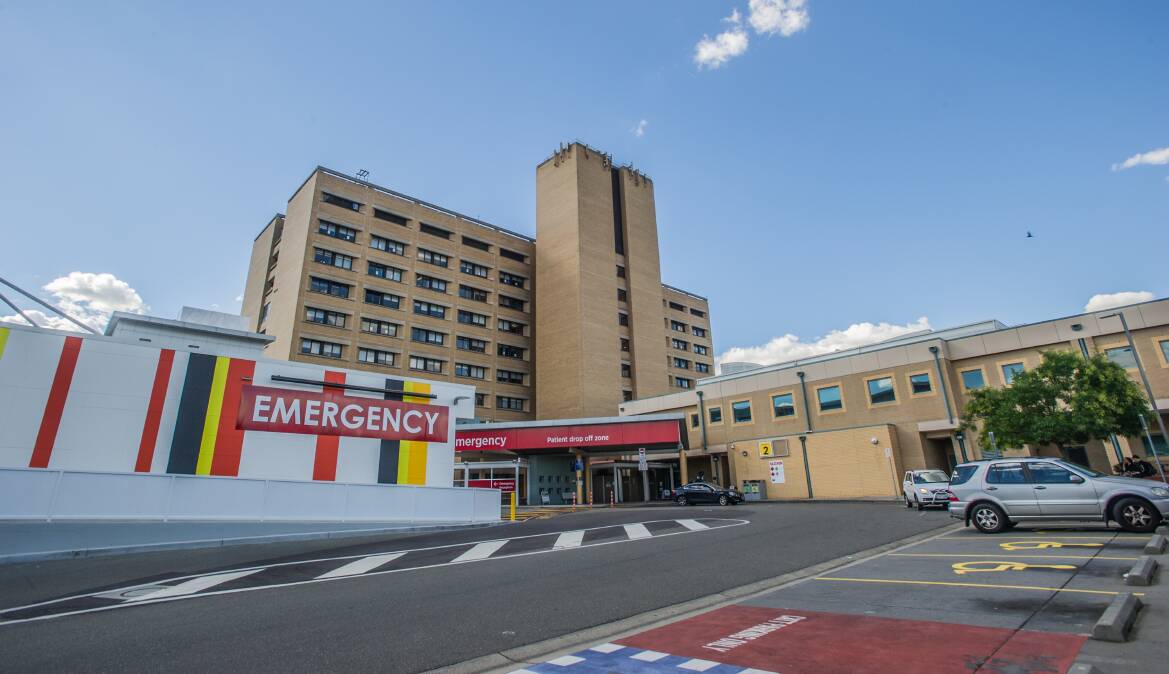Twenty five nurses left Canberra Hospital's intensive care unit over the Omicron peak, raising concerns about a lack of senior staff.
The nurses' union has called for proper workforce planning to deal with the overwhelming demand.
While the number of nurses across the territory's public health system has increased over the past year, there are concerns about the skills mix.
Australian Nursing and Midwifery Federation ACT branch secretary Matthew Daniel said pressures had been particularly evident in Canberra Hospital's intensive care unit after a number of senior nurses had left.
"[The intensive care unit is] facing particular problems. The management team there are facing increasing bed numbers to address the need for increased numbers of ICU beds but they just simply don't have the staff," Mr Daniel said.
"They're certainly trying to put in strategies like learning programs to get nurses in the front door to increase the nursing numbers but when you've got such a high number of senior experienced nurses leaving then that puts pressure on those nurses that are there. Particularly junior nurses and you can only ask senior nurses to do so much in terms of the education and induction of new staff, because they have their own workload."
Canberra Health Services confirmed 25 nursing staff had left the intensive care unit between October 1, 2021 and March 30, 2022. March figures show there were 174 nursing staff in the ICU but this number fluctuates.
Canberra Health Services executive director division of surgery Lisa Gilmore said there were 36 new staff hired between those dates but it was not specified what level those staff were at.
"ICU teams are among those who have been on the frontline throughout the pandemic. In addition to their usual patient load, ICU staff have cared for COVID-19 patients who are extremely unwell," Ms Gilmore said.
"We are committed to taking the right steps to support our team members as we strive to provide the best working environment we can."
Canberra's health system has faced increasing pressure over recent months as COVID cases have soared and staffing shortages have compounded. Most days more than 100 staff are in isolation and unable to work due to illness.
The hospitals are also struggling to replace those staff with casual and agency workers.
The ACT government has pledged to introduce ratios of one nurse to every four patients and there was a commitment to employ 90 new nurses and midwives.
Almost all of those nurses have been employed. The most recent figures given to The Canberra Times showed 88 had been employed. The allocations will be spread across Canberra Hospital and Calvary Public Hospital Bruce, at 55 and 35, respectively.
But even this has done little to ease staffing pressures.
While staff shortages have continued to plague the territory's health system, the actual number of nurses employed by Canberra Health Services has increased over the past year by almost 280.
In March last year there were 3002 full-time nurses employed by Canberra Health Services and 12 months later there were 3280 employed.
But 365 nursing staff either resigned or retired from Canberra Health Services last year. This number does not include those whose contracts ended or who were dismissed.
Mr Daniel said one of the union's main concerns was around workforce planning, which he said had "fallen off the wagon" over the past two years. He said a clear plan needed to be developed for each ward across Canberra's public hospitals.
"We see some workforce planning that's done based on some principles and some general thinking but it's not based on evidence," he said.
"We need to see ward-by-ward across the public sector - what's the age cohort? How many people are going to retire in the next little while? How many people have we got in the front door? How many graduates are we taking in and what services are we doing to require over the coming years?
"There is no one place where we can see a match between what the demand for nurses and midwives is going to be and the supply.
"We believe there is a need for an urgent and very high-level strategic group of people to come together and start bringing this information together because it's not coming together fast enough."
ACT Health Minister Rachel Stephen-Smith said the closure of the mass vaccination clinic at Australian Institute of Sport Arena at the end of the month would help to bring more senior staff back into hospital settings.
"It's been a really great opportunity for some of our experienced staff to be a part of a world-leading vaccination program but we do need all hands on deck in our frontline service delivery at the moment, particularly as we come into winter," she said.
Ms Stephen-Smith said last week staffing shortages at the hospital had been compounded by senior staff leaving high-pressure settings, including the intensive care unit and the emergency department.
"We've also seen an impact of people who have been really exhausted over the last couple of years and so we're seeing experienced staff moving out of those hospital settings and that's also had a workforce impact across both of our hospitals," Ms Stephen-Smith said.
"We're also seeing a challenge with skills mix as well, so our teams are working every day to ensure that our hospitals can be staffed safely."








